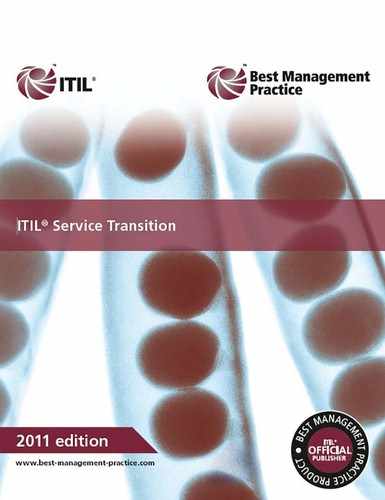0%
26Chapters
0-1Hours read
0kTotal Words
Book Description
The ITIL Service Transition stage of the ITIL v3 framework offers guidance for IT professionals wishing to introduce new and changed services, ensuring that the value identified in the service strategy is maintained and controlling risks to smooth operations. The guidance describes best practices for managing service change, and helping departments and businesses to transition efficiently, from one state to another. The effect of change on operations, customers, users and the business are all considered in this critical stage of the ITIL lifecycle suite.
Table of Contents
- Cover
- Title
- Copyright
- Contents
- List of figures
- List of tables
- Foreword
- Preface
- Acknowledgements
- 1 Introduction
- 2 Service management as a practice
- 3 Service transition principles
- 4 Service transition processes
- 5 Managing people through service transitions
- 6 Organizing for service transition
- 7 Technology considerations
- 8 Implementing service transition
- 9 Challenges, critical success factors and risks
- Afterword
- Appendix A: Description of asset types
- Appendix B: Risk assessment and management
- Appendix C: Related guidance
- C.1 ITIL guidance and web services
- C.2 Quality management system
- C.3 Risk management
- C.4 Governance of IT
- C.5 COBIT
- C.6 ISO/IEC 20000 service management series
- C.7 Environmental management and green/sustainable IT
- C.8 ISO standards and publications for IT
- C.9 ITIL and the OSI framework
- C.10 Programme and project management
- C.11 Organizational change
- C.12 Skills Framework for the Information Age
- C.13 Carnegie Mellon: CMMI and eSCM framework
- C.14 Balanced scorecard
- C.15 Six Sigma
- Appendix D: Examples of inputs and outputs across the service lifecycle
- References and further reading
- Abbreviations and glossary
- Index
